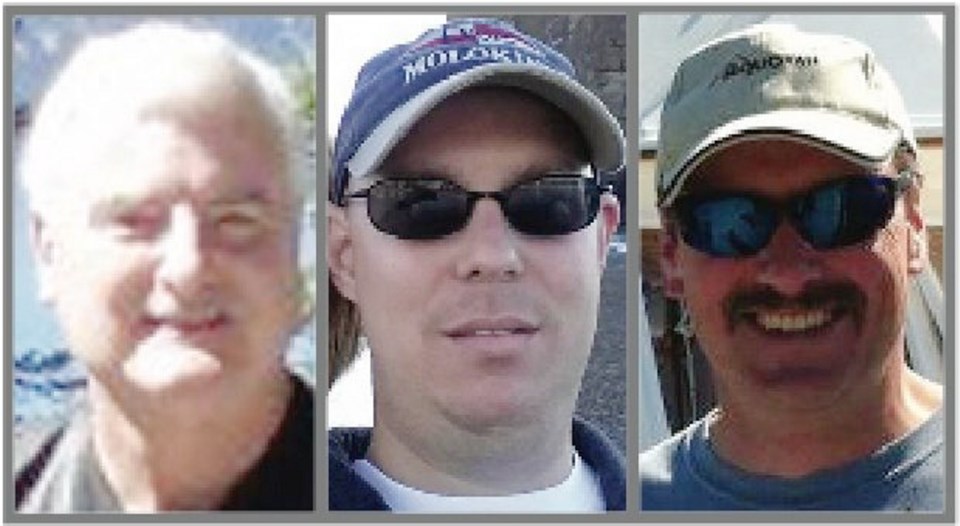A Facebook update posted just before a fatal deep dive off Nanaimo Oct. 11 could hold clues to what caused the deaths of two American men.
Robert Scott Young, 60, of Olympia, Wash., and Harold John Burkholder, 38, from Kent, Wash. died while scuba-diving near Snake Island, east of Nanaimo harbour.
A third man, identified on Facebook as Bill Sherman, 47, of Bremerton, Wash., survived.
The diving spot features the Snake Island Wall, a shallow shelf that drops more than 150 metres, according to the Vancouver Island Dive Sites website.
On Oct. 10, the day before the accident, Burkholder’s Facebook page showed him crossing the U.S.-Canada border.
At 10:25 a.m. on the morning of the accident, Burkholder posted an update that said, “Breakfast before the dive into the abyss! With Robert S Young and Bill Sherman at Tania’s.” Tania’s Restaurant is on Departure Bay Road in Nanaimo.
Then, at 1:27 p.m., Burkholder wrote: “Bob’s having trouble updating his dive computer software. We’re going anyway!”
Divers use diving computers to time descent and gauge depth so they know how much air or gas they have left.
The data also help divers to return to the surface at the proper pace, to avoid decompression sickness or an embolism.
The RCMP and coroners office are investigating but are not releasing information yet about what happened, said coroners spokeswoman Barb McLintock.
Sherman surfaced from the dive and survived. Young surfaced but collapsed and could not be resuscitated. Burkholder’s body was found two days later at about 78 metres.
Ian Buckingham of Victoria, a former coroner and navy diver, said deep dives can be dangerous.
“The deeper you go, the more dangerous it is.”
Definitions of a deep dive vary in the recreational and commercial diving worlds. A deep dive might be anything deeper than 30 metres to anything more than 60 metres, known as a technical dive. Each carries different risks. At about 30 metres, surroundings become dark.
Recreational divers typically use compressed air to a maximum depth of about 40 metres. Technical or deep divers with advanced training typically use a gas blend, such as trimix (oxygen, nitrogen and helium) or heliox (helium and oxygen).
“The other problem you get with really deep diving is breathing. … You don’t breathe, you bite air in and spit it out. The air is so dense at that depth, it’s very difficult to breathe,” said Buckingham.
He said the most common cause of diving deaths is air embolism, when a quick ascent forces air bubbles from the lungs into a vein or artery, blocking it.
Young’s obituary said he was a career soldier, retiring in 1996 as a major at Joint Base Lewis McChord in Washington.
At the time of his death, he was living in Olympia and worked at Engility Corporation at the base as a simulation program analyst. He was married to Choon Hong Park for more than 32 years.
Burkholder’s Facebook page indicates he, too, was in the military and that a funeral and burial service is tentatively scheduled for Oct. 28 in Puyallup, Wash., followed by a military memorial service Nov. 2.



